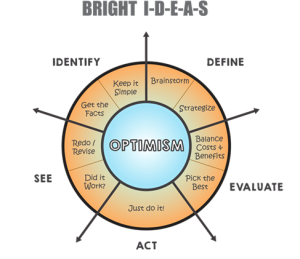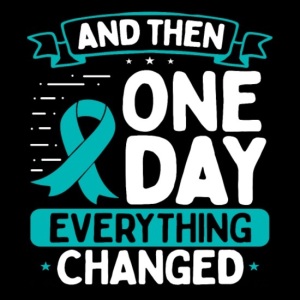 Today marks the commencement of Scleroderma Awareness Month and this year’s theme is:
Today marks the commencement of Scleroderma Awareness Month and this year’s theme is:
Every Journey Matters.
Every person’s experience with scleroderma is unique, no two cases are the same. Making Scleroderma extremely difficult to diagnose and complicated to manage.
So what is scleroderma?
Scleroderma (or systemic sclerosis) is a rare incurable disease that affects the skin and results from an overproduction and accumulation of a fibrous type of protein called collagen which is in our body’s tissues.
The thing is, when there is an overabundance of collagen in the body it leads to the thickening and tightening of the skin and can also affect internal organs; such as the lung, GI tract, heart and kidneys.
Unfortunately, having scleroderma can present many medical challenges, at least that is what I’ve found. And I’ve endeavoured to share my journey over the past few years or so, so that others can be informed and encouraged as they either deal with it themselves, or want to understand more about how this rare, incurable disease can affect loved ones.
After getting an initial diagnosis, (or working towards getting a diagnosis) you’ll need to find health professionals that are familiar with this disease, and who are able to assist in managing your treatment going forward.
You will undoubtedly have to go to quite a few medical appointments, make important and sometimes difficult decisions about your overall well-being and care, take medications (often a lot of medications), manage side effects, and deal with aches and pains, fatigue, amongst other things.
 You may also have strong emotional reactions like depression and anxiety and this can be especially true when scleroderma affects the way you look. As well as, when you have to start navigating the many new normals along the way, as your symptoms change over time.
You may also have strong emotional reactions like depression and anxiety and this can be especially true when scleroderma affects the way you look. As well as, when you have to start navigating the many new normals along the way, as your symptoms change over time.
But we all know people who seem to manage even very difficult situations with great skill and success.
These people are often referred to as “effective copers.” And you too can become an effective coper as well, by using the BRIGHT IDEAS approach:
BRIGHT means that you should look at problems with an optimistic, or positive, “can-do” attitude.
The thing is, it’s easy to become overwhelmed with problems when you are chronically ill and sometimes it’s hard to feel optimistic.
It’s okay if you’re not completely confident in your abilities at the beginning however, working through the following “IDEAS” may well help build your confidence as you begin to have success in coping with specific problems.

IDENTIFY the problem – Be very specific when identifying problems and issues that you may face. Don’t settle for generalisations such as; “I need to find better ways to cope with my illness.”
Be specific! Once you define the problem more specifically it’ll become more manageable to come up with potential solutions.
DEFINE your options – After you’ve identified the problem you need to cope with, brainstorm solutions:
- Make a list (as long as you can) of all the ways you could try to cope with this. Don’t stop at two or three alternatives, try for at least a dozen. Research shows that people who think of lots of alternate ways to cope are better at eventually solving their problems.
- The challenge is that we usually skip this brainstorming step. We tend to just do what we always do and what we are comfortable with, for we all act in a predictable manner. Brainstorming can help us think differently about our problems and help us to discover new ways to cope. Don’t skip this important step.
- When you are brainstorming, write down everything that comes to mind. Don’t think, “But that won’t work” as you’ll get to evaluate strategies in the next step. During the brainstorming step just list everything you can think of.
- Don’t think that you have to come up with all the solutions yourself. Ask other people (spouse, kids, healthcare providers) what approaches they would use to try to solve the problem you’ve identified. You’ll be surprised at all of the things you never even considered!
 EVALUATE your options – Now look at each coping strategy that you’ve written down.
EVALUATE your options – Now look at each coping strategy that you’ve written down.
Carefully evaluate the pros and cons of each one and avoid making any quick decisions about any of the strategies.
After you’ve carefully considered all of the pros and cons of each approach, choose the approach that you think has the best chance of success, with the fewest negative costs.
Now let’s get ready for change!
ACT on your plan! Start putting your coping approach into action. This may mean getting some instruction, getting some equipment, or even learning and practicing new skills.
You’ll more than likely need some help from other people to begin using your coping strategy. This is where having a good support system in place can come in handy. This is something we’ll explore in a future post 🙂
EVALUATE your plan – It’s really important to always learn from what you are doing and the plans that you’ve enacted. After you’ve tried to implement a coping strategy, evaluate it.
Ask yourself, did my plan work the way I hoped?
If ‘YES’… Great! It’s time to reward yourself.

If ‘NO’… consider: Was it because the coping strategy itself didn’t work, or was it just too hard for you to implement it?
Ask yourself:
- Did I stick to my plan? If not, what did I end up doing instead?
- Did anything limit my ability to implement my plan?
- Should I revise my plan?
Hopefully, these can assist you in either coping with some of the problems presented by scleroderma, or help in your understanding of what people affected by scleroderma have to work through.
Much of the above information was gathered from one of the modules on the Taking Charge of Systemic Sclerosis (TOSS), an internet self-management program on the Self-Manage Scleroderma site.
Over the coming weeks I’ll be asking a few people that I have come to know over the course of the past few years or so to share their stories about scleroderma so that we can help raise awareness throughout June.
Blessings ’til next time 🙂
